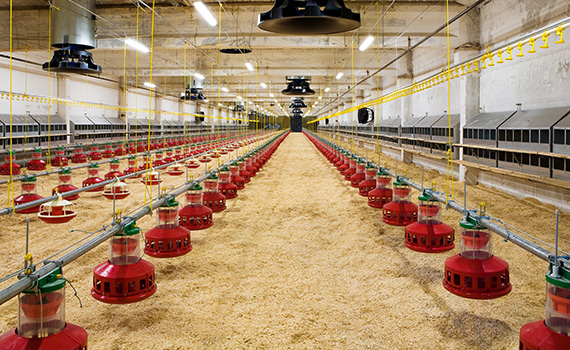Pilgrim’s veterinarian shares experiences with NAE production
Preparation, meticulous attention to sanitation and improved communication with both the hatchery staff and growers are critical for successfully raising broilers without antibiotics, Elizabeth Dale, DVM, head veterinarian for Pilgrim’s, told Poultry Health Today.
Over 50% of Pilgrim’s flocks are now raised with “no antibiotics ever” (NAE), in organic programs or with no human-use antibiotics, a program that includes ionophores. Antibiotics have not been used at any of the company hatcheries for nearly 3 years, Dale said.
Results with NAE flocks have varied by complex or geographic location. “If there’s one thing we’ve learned in this process…the only constant is that there’s no constant. The challenges are different for each location,” she said.
Dale said there was a correlation between their success rate and production flows where they invested more time to prepare. At hatcheries, for example, there was a focus on sanitation. “That’s the number one priority,” she said. There were also equipment upgrades and fine-tuning of processes and procedures to ensure good chick quality.
Pilgrim’s also worked with hatchery personnel to make sure they understood the importance of the changes and why they were being asked to take additional measures to raise overall standards, Dale continued.
Asked if 7-day mortality spiked after antibiotics were pulled from hatcheries, Dale said, in their best managed, cleanest hatcheries, they didn’t see that much of a difference. In most places, there was anywhere from a 0.25- to a 0.3-point increase in mortality. In those locations, a search was initiated to find problems that could be corrected. The best results were seen in the organic bird location immediately after it eliminated the use of gentamicin in the hatchery.
Growout changes
Pilgrim’s also made changes on farms to accommodate flocks grown without antibiotics. Housing upgrades were made, for instance, that would allow for decreased bird density.
Well before it started its NAE program, the company began experimenting with coccidiosis vaccination and bioshuttle programs — where an in-feed anticoccidial is used 2 to 3 weeks after vaccination. The most successful locations were those on a bioshuttle plan. Gaining experience with coccidiosis vaccination helped smooth the transition to a straight vaccination program for NAE flocks.
There was an emphasis on the re-used litter program. That coupled with the use of vaccines that seed houses with coccidial vaccine oocysts has helped as well, “But certainly, getting a handle on your coccidial cycling is key,” Dale said.
Necrotic enteritis
Nevertheless, necrotic enteritis (NE), a common problem in NAE flocks usually linked with coccidiosis, has been a frustrating problem. There are still sporadic breaks on individual farms that seem to be repeaters. It’s also interesting that NE isn’t always associated with coccidiosis. “So, that presents a little bit of a different challenge,” she said.
Antibiotic alternatives, Dale noted, are used, but here, too, the results are inconsistent. Some work really well in one location but not in another.
As with hatchery personnel, Pilgrim’s has worked to improve communication with growers. An effort has been made to spend more time with them to deepen the relationship and by having more grower meetings to educate them. “In an antibiotic-free world, you have to be so much more proactive than reactive,” she noted.
Poultry medicine has always been about preventive medicine and that’s what drew her to the profession, Dale said, but with antibiotic-free production, it’s even more so. It challenges the whole industry and “I think it’s driven us to be better in all aspects: in housing, in management, in our hatcheries.”
It’s important to maintain a standard of care and provide antibiotic treatment to birds when indicated, she said.
“I tell people that when we go NAE, it really drives being meticulous. It drives perfectionism, because that’s how you’re going to do it successfully, because you’re trying to anticipate and prevent any of the conditions that are going to predispose that bird to having a clinical outbreak of disease where they require antibiotics.”
Editor’s note: This video interview, podcast and news article were developed independently by the editors of Poultry Health Today. They are presented here solely for their news value. The opinions and recommendations presented are not necessarily shared by the editors of Poultry Health Today or the interviewee’s employer.
Posted on June 7, 2019
 We’re glad you’re enjoying
We’re glad you’re enjoying










